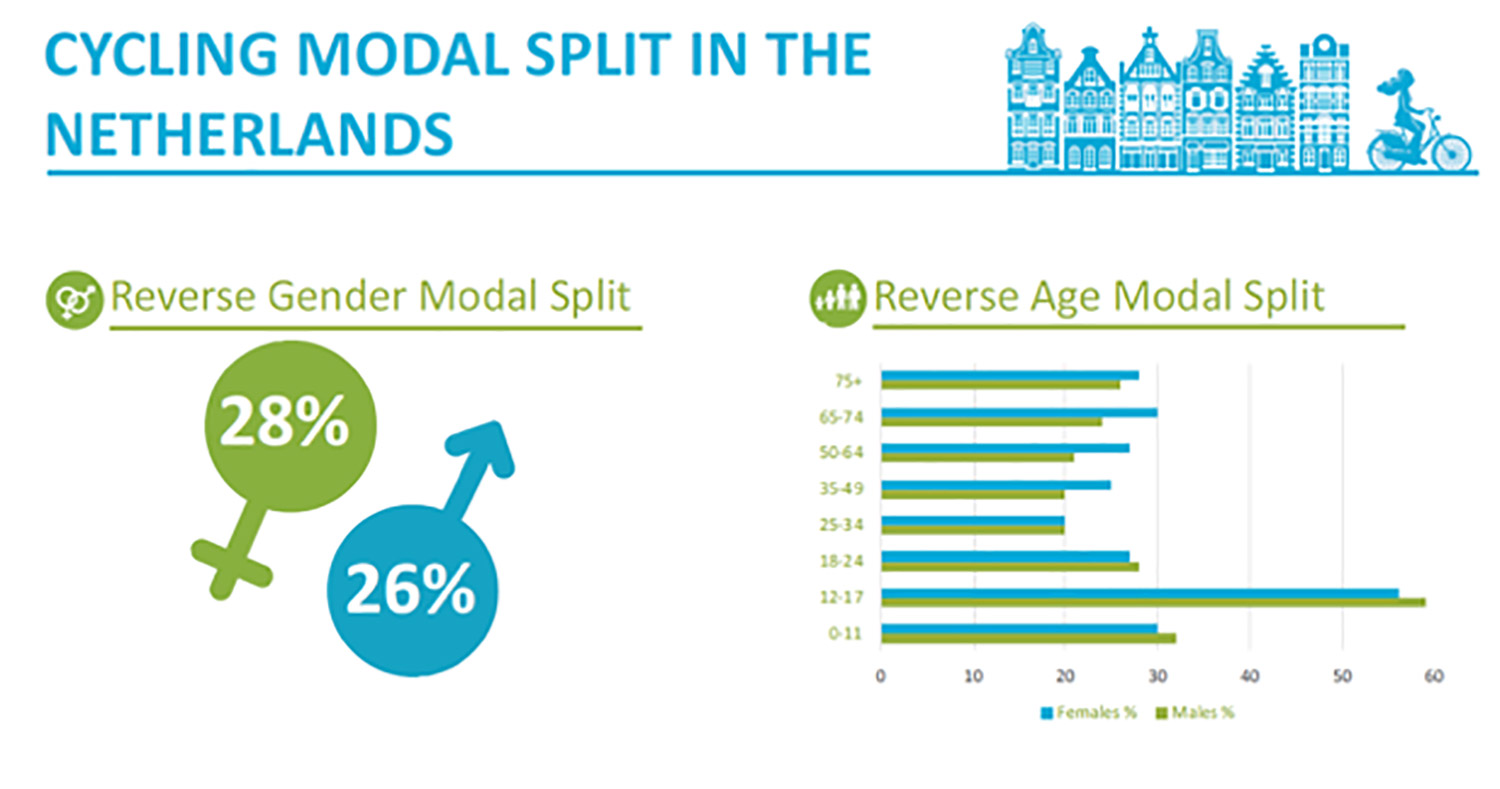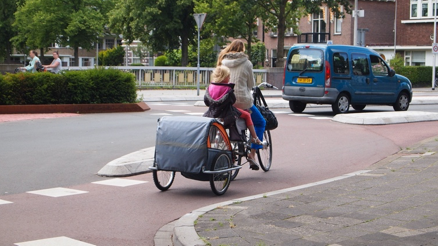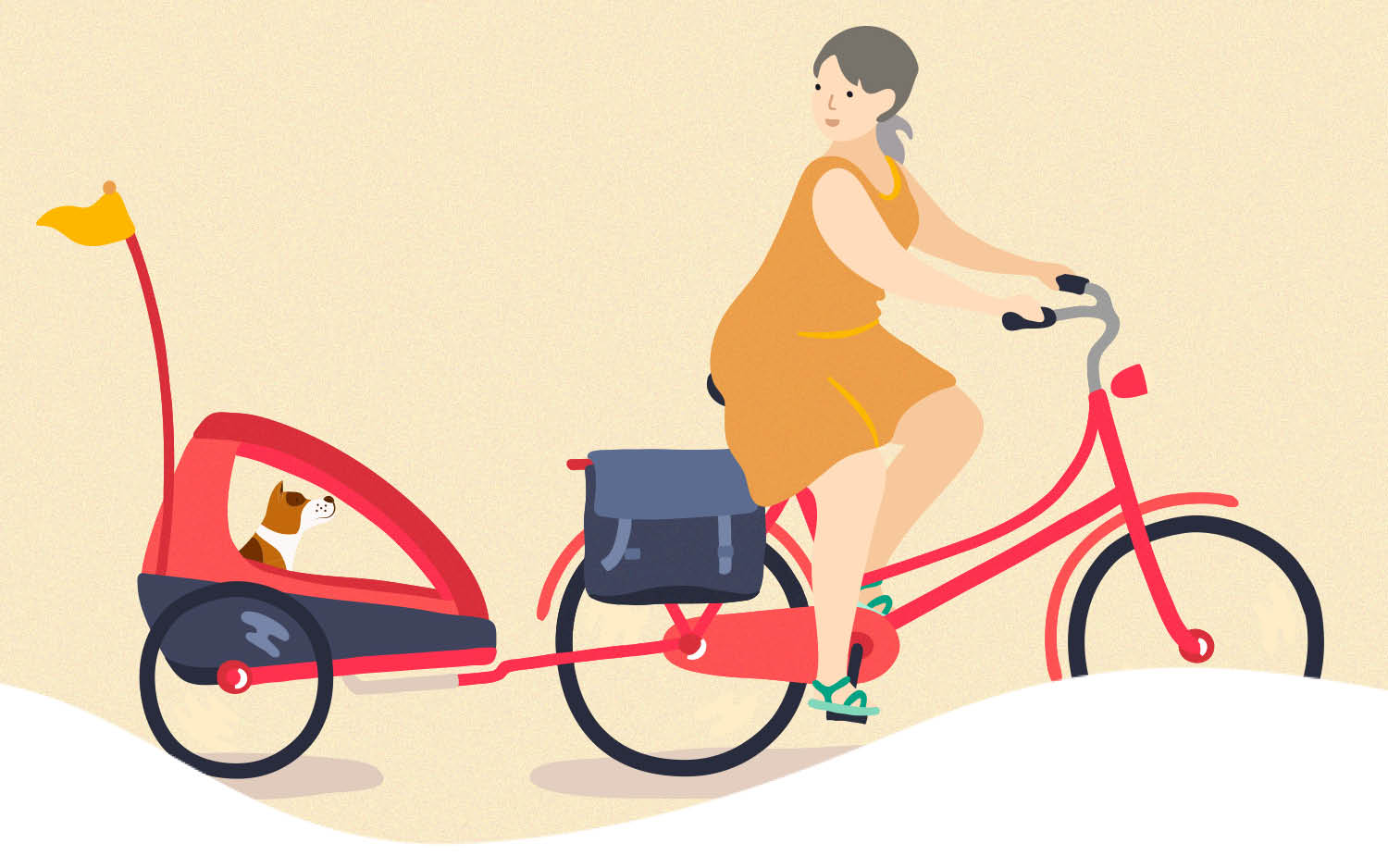Why Cycling Fits Women’s Mobility Needs and What Is Needed to Unlock the Potential
In the Netherlands, where I am from, talking about the differences between the levels of cycling or cycling experiences for men and women is uncommon. Cycling is something many people simply do without much thought. Whether done on a daily basis or just occasionally, people cycling for many different purposes, many considering it ‘hassle-free’. Of course transportation professionals in the Netherlands, on the other hand, do talk about cycling, and work on facilitating and stimulating bicycle use. With 27% of all trips made by bicycle it can’t be avoided, even if you wanted to. Interestingly, the conversations and projects carried out by professionals do not consciously take into account gendered cycling patterns or needs. Still, statistics show that some good things are happening when it comes to women and cycling.
Women on Bikes
In the Netherlands, we have what you could call a reverse gender gap in cycling. Almost everywhere around the globe, cycling is dominated by men. In the Netherlands however, the cycling modal share for women in 2017 was 28% while for men it was 26%. Out of 10 bike trips made, 5.5 trips are made by women.
We also have a reverse age gap. In most countries cycling is dominated by male adults aged 25 to 55. In the Netherlands the cycling modal share for this group is the lowest with 20% of the trips done by bike. The youngsters aged 12 to 18 are the true Dutch cycling heroes–boys as well as girls. Their cycling modal share is over 55%, cycling on average 26 minutes per day, compared to the national average of 12 minutes per day.
Furthermore, the 65-75 year age group has a higher cycling modal share compared to all other adult age groups and they cycle 2 minutes more per day, compared to the national average. The technical developments around electric assist bicycles* have contributed to the e-bike revolution we see today, and the 65+ age group, especially the women, were the early adopters. Back in 1985 the bicycle modal share for 65+ women was 14%, by 2017 it was over 26%.
Some people belief that women in the Netherlands have a special DNA, or that we cycle because the country is flat and it never rains. Of course, the relative flatness makes cycling easier, but it does rain (and even snow every now and then) in the Netherlands and up to now, no cycling DNA has been identified. What else is going on then?

Women’s Mobility Patterns
In the Western world women’s mobility patterns are characterised by multiple, short trips and trip chaining. They also tend to make more non-work trips compared to men, often times accompanied by children. Men, on the other hand, take less trips but travel further distances. Furthermore, men tend to travel more by car compared to women, whereas women use public transport to a larger extent and walk more.

The characteristics ‘multiple short trips’ and ‘trip chaining’ are relevant when it comes to cycling. Take a moment and think about it: isn’t cycling perfectly suited to make short trips and to trip chain? Cycling allows you to combine your roles in your family, at work and in your community. It offers flexible, low cost transportation. Which is relevant, since it is still the case that women earn less compared to men. If you can save on road tax, insurance and gasoline, there is more left that you can use for family expenses!
It makes you wonder why women in countries like Canada, the US and the UK do not cycle more?
More information …
I wrote this blogpost on the topic of women and cycling in July 2020 for the Women of the ITE sub-committee website . You find the original on this webpage.

Angela van der Kloof
info@so-cycling.nl

